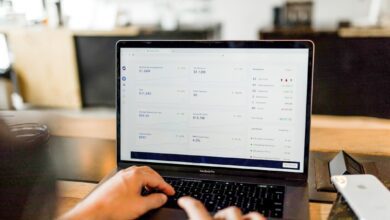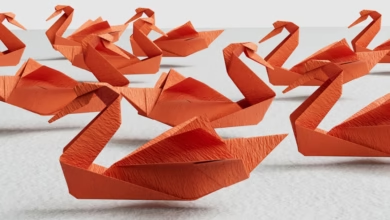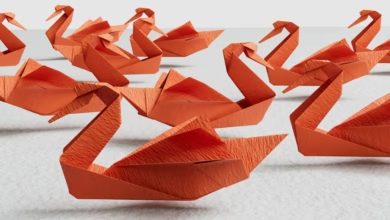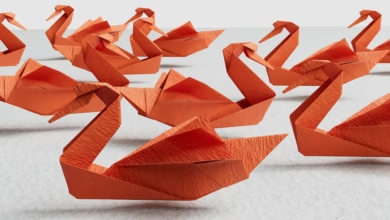Metals in Motion: Analyzing Silver, Copper, and Rare Earths in Today’s Economy

In today's rapidly evolving economy, the significance of metals extends far beyond their physical properties; they are integral to both industrial applications and investment strategies. This article delves into the multifaceted roles that various metals play in shaping economic landscapes, from silver's dual function in manufacturing and as a safe-haven asset to copper's status as a barometer for global economic health. We will explore how the rise of green energy technologies is driving unprecedented demand for rare earth metals, while also comparing the investment potential of platinum and palladium. Furthermore, we will examine the importance of metals in diversifying investment portfolios and the ways inflation influences the pricing of precious and industrial metals. Lastly, we will consider the future of aluminum in a sustainable economy and the impact of mining regulations on metal prices. Join us as we uncover the intricate relationships between these elements and their implications for investors and industries alike.
- 1. The Dual Dynamics of Silver: Industrial Applications and Investment Trends
- 2. Copper Prices as an Economic Barometer: Understanding Market Signals
- 3. Navigating the Green Revolution: Rare Earth Metals and Emerging Demand
1. The Dual Dynamics of Silver: Industrial Applications and Investment Trends
Silver plays a unique role in both industrial applications and investment markets, creating a dual dynamic that influences its demand and pricing. On the industrial side, silver is prized for its outstanding electrical conductivity, thermal conductivity, and reflectivity. These properties make it essential in various sectors, including electronics, solar energy, and medical applications. The growth of renewable energy technologies, particularly solar panels, has significantly boosted silver demand, as it is a key component in photovoltaic cells. Additionally, silver's antimicrobial properties have led to its increased use in medical devices and coatings, further enhancing its industrial relevance.
Conversely, silver is also viewed as a safe-haven investment, akin to gold, particularly during periods of economic uncertainty. Investors often turn to silver to hedge against inflation and currency fluctuations. Its relatively lower price compared to gold makes it an attractive option for those looking to diversify their portfolios without making a substantial capital commitment. The interplay between these industrial and investment demands creates a complex market dynamic, as shifts in economic conditions, technological advancements, and investor sentiment can lead to significant fluctuations in silver prices.
In recent years, the rise of green technologies has intensified the competition for silver's industrial applications, while global economic uncertainties have continued to drive investment interest. This dual demand can result in price volatility, as industrial consumption and investment speculation often fluctuate independently. Understanding these dynamics is crucial for stakeholders in both markets, as they navigate the evolving landscape shaped by technological innovation and economic trends.
2. Copper Prices as an Economic Barometer: Understanding Market Signals
Copper prices have long been viewed as a reliable indicator of global economic health, often referred to as “Dr. Copper” due to its ability to diagnose the state of the economy. This is largely because copper is a critical component in various industries, including construction, electronics, and renewable energy. As such, fluctuations in copper prices can reflect changes in industrial demand and economic activity.
When the economy is thriving, the demand for copper tends to increase, driven by construction projects, manufacturing, and infrastructure development. A surge in copper prices often signals robust economic growth, as manufacturers ramp up production to meet rising consumer demand. Conversely, when economic conditions weaken, demand for copper typically declines, leading to lower prices. This inverse relationship provides investors and analysts with valuable insights into broader economic trends.
Moreover, copper prices are influenced by global events, such as trade policies, geopolitical tensions, and supply chain disruptions. For instance, significant developments in major copper-producing countries, like Chile and Peru, can lead to price volatility. Additionally, growing concerns about inflation can also impact copper prices, as investors turn to commodities as a hedge against currency devaluation.
In recent years, the push for green technologies has further complicated the narrative around copper prices. The transition to electric vehicles and renewable energy sources is expected to drive increased demand for copper, as these technologies rely heavily on the metal for wiring and infrastructure. As such, shifts in market sentiment regarding climate policy and technological advancements can create new dynamics in copper pricing.
Overall, monitoring copper prices offers valuable market signals that can help investors gauge economic conditions and make informed decisions. Understanding these signals is crucial for navigating the complexities of both industrial demand and investment strategies in the metal markets.
3. Navigating the Green Revolution: Rare Earth Metals and Emerging Demand
As the world increasingly shifts towards sustainable energy solutions and advanced technologies, the demand for rare earth metals is experiencing a significant surge. These metals, which include elements such as neodymium, dysprosium, and lanthanum, are essential components in the production of magnets, batteries, and various electronic devices, all of which are integral to green technologies like wind turbines, electric vehicles, and solar panels.
The transition to renewable energy sources is driving this emerging demand. For instance, neodymium-iron-boron magnets are crucial for the efficiency of wind turbine generators, while lithium-ion batteries, which heavily rely on rare earth elements, are foundational for electric vehicles. As governments worldwide implement policies to reduce carbon emissions, the market for these metals is expected to grow exponentially.
Moreover, the geopolitical landscape plays a significant role in the rare earth metals market. With a large percentage of the world's supply concentrated in a few countries, particularly China, concerns over supply chain reliability and national security have prompted countries like the United States and Australia to invest in domestic production capabilities. This shift not only aims to secure supply but also to capitalize on the anticipated growth in demand due to the ongoing green revolution.
However, the extraction and processing of rare earth metals pose environmental challenges, leading to increased scrutiny and the need for sustainable mining practices. Innovations in recycling technologies are also gaining traction, as they provide an alternative source of these critical materials while minimizing ecological impact.
Navigating the evolving landscape of rare earth metals requires investors and industries to stay informed about technological advancements, regulatory changes, and market dynamics. As the green revolution continues to unfold, the role of rare earth metals will be pivotal in shaping a sustainable future, making them a focal point for both strategic investment and responsible sourcing initiatives.
In conclusion, the interconnectedness of metals with both industrial applications and investment strategies underscores their significance in today’s global economy. Silver's dual role highlights its importance not only as a precious metal for investment but also as a critical component in various industries, particularly in the context of advancing technologies. Similarly, copper prices serve as a vital indicator of economic health, reflecting broader market trends and consumer confidence. The rising demand for rare earth metals, driven by green energy technologies, illustrates how the transition to sustainable practices is reshaping the metals landscape.
As we compare platinum and palladium, it becomes evident that each metal presents unique investment opportunities, influenced by market dynamics and individual investor goals. Furthermore, the inclusion of metals in diversified investment portfolios offers a strategic approach to mitigate risks, particularly in an environment characterized by inflationary pressures that affect both precious and industrial metals.
Looking ahead, the future of aluminum appears promising, especially as industries strive for sustainability and reduced carbon footprints. However, the impact of mining regulations cannot be overlooked, as they play a crucial role in shaping metal prices and influencing market supply. Overall, understanding these factors provides valuable insights for investors and industry stakeholders alike, emphasizing the need for a holistic approach to navigate the complexities of the metals market in an ever-evolving economic landscape.





